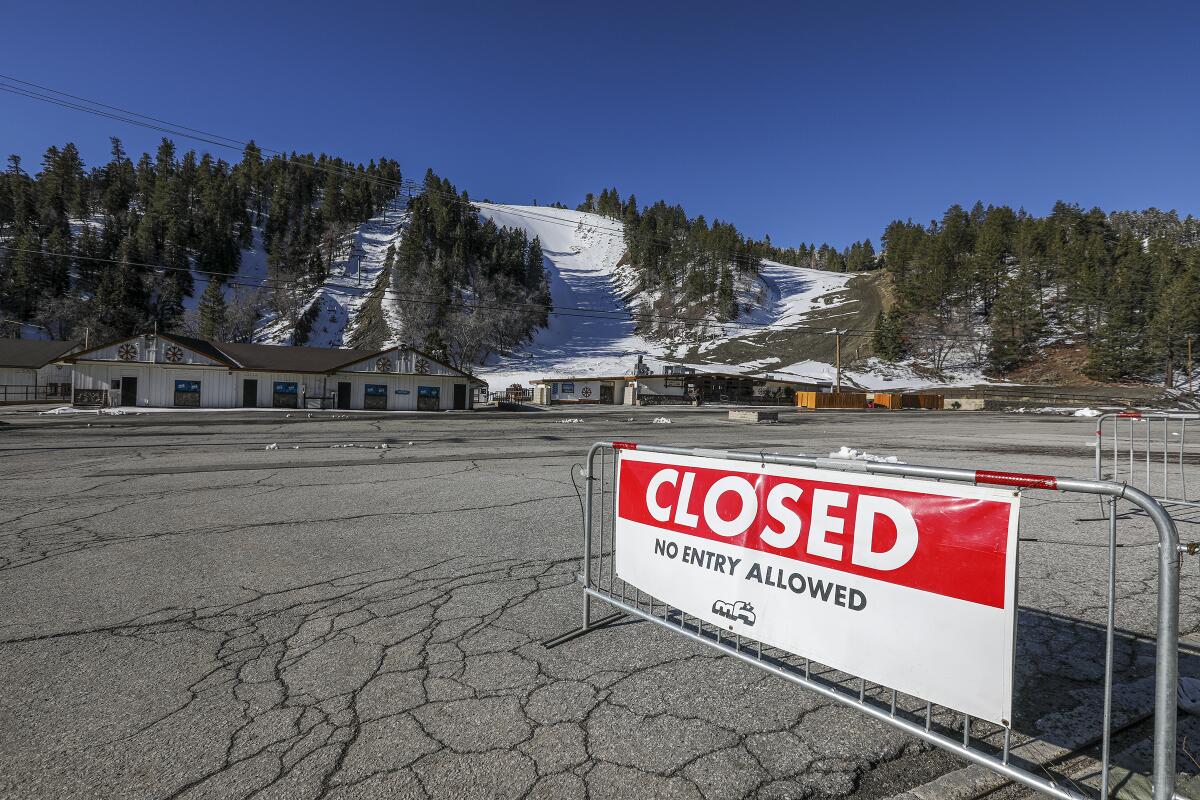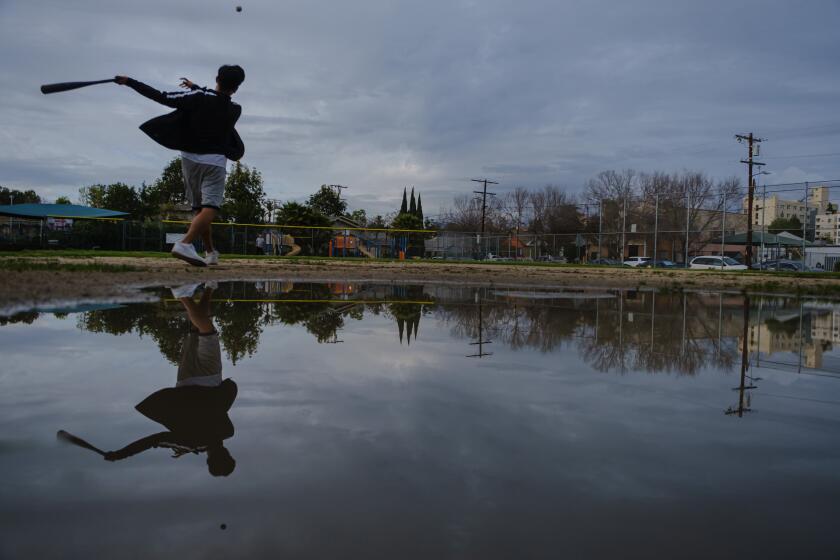Snow day? No way. Coronavirus restrictions bar outdoor play after storm blankets mountains

- Share via
Residents in the Southern California mountains awoke to a blanket of fresh snowfall on Wednesday, but thanks to restrictions due to the coronavirus pandemic, a would-be snow day was quashed by health officials.
A slow-moving storm has unleashed steady precipitation over the last two days, drenching urban areas with rain and pounding the mountains with powder. Mountain High Resort reported that 20 inches of snow had fallen in the last 24 hours, and Big Bear Mountain Resort saw 8 to 12 inches of new snow overnight.
But the snowfall was bittersweet, as many mountain recreation, skiing and snow play areas are closed due to the coronavirus outbreak.
A post on Mountain High’s website summed up the disappointment: “If it weren’t for the coronavirus, we’d be experiencing the best spring in years.”
“With the governor’s stay-at-home order, we ask that you enjoy the scenic views from indoors or on our handful of live cams only,” Big Bear added. “Thank you for staying home.”
The storm has brought a much-needed soaking to the region, dousing some areas with more rain over a four-day period than they typically get the entire month.
Downtown Los Angeles has received 2.04 inches since Sunday, more than twice its normal monthly rainfall total, according to Joe Sirard, a meteorologist with the National Weather Service in Oxnard.
“It’s quite beneficial when we get the rain we need,” said Sirard, who jokingly labeled this month “Awesome April” following what was hoped to be a “Miracle March” after an otherwise dry winter.
“It looked rather dismal going into early March. Frankly, we were just way, way, way below normal. It did not look good. Fortunately, we had somewhat of a March Miracle in terms of rainfall, and now we’re into a lot of rain in April.”
A low-pressure system is expected to bring a little more rain to Southern California through Wednesday after record rainfall Monday.
Perhaps no area better exemplifies the dramatic turnaround than downtown L.A. Just 0.36 inches of rain fell there during the first two months of this year — adding up to the fourth driest combined January and February on record.
As of March 12, the area’s seasonal rainfall was 4.45 inches below normal.
After one of the driest Februaries on record across much of California, the first day of March brought a dash of rain and a dusting of fresh powder to the parched landscape.
Then the dam broke. So much rain has deluged the area over the last few weeks that downtown is now slightly above its typical total for this time of year.
“We’re near the end of the rainy season, so we need to get our rain now because we’re facing months of dry weather ahead,” Sirard said.
This week’s rain has been record-breaking at times. Downtown L.A., Burbank, Palmdale and Lancaster all broke decades-old single-day rainfall records this week. Long Beach Airport did likewise Tuesday — receiving 0.82 inches of rain, which surpassed a daily standard that had stood since 1958.
“Pretty much across the board everybody has exceeded the typical April rainfall,” Sirard said. “It’s quite significant and, obviously, quite beneficial.”
Many areas of Los Angeles County neared or surpassed 1 inch of rain during a 24-hour period that ended at 7 a.m. Wednesday, according to the National Weather Service.
So far, Sirard said, the Los Angeles County valleys have received anywhere from 1.5 to 3.5 inches overall during the storm, while coastal areas generally got between .75 to 2 inches.
And April’s awesomeness isn’t over yet. Sirard said storm clouds will return later Wednesday night, bringing a fresh round of showers and potentially significant snowfall to the region through Friday morning.
“That thing is just stubborn as all get go,” Sirard said of the system. “It doesn’t want to move out of the way.”
More to Read
Sign up for Essential California
The most important California stories and recommendations in your inbox every morning.
You may occasionally receive promotional content from the Los Angeles Times.












